The thrill of discovering a creature that lived millions of years ago is an experience unlike any other. Fossil hunting combines the excitement of treasure hunting with scientific discovery, offering a tangible connection to Earth’s ancient past. While many important paleontological sites are protected and closed to public collection, numerous locations around the world welcome amateur fossil hunters to explore and even keep their findings. These accessible sites provide educational opportunities for everyone from families with curious children to serious hobbyists. Before embarking on your fossil-hunting adventure, it’s important to understand where you can legally search, what tools you’ll need, and how to identify and preserve your discoveries.
Understanding Fossil Collection Laws

Before heading out with your hammer and chisel, it’s crucial to understand the legal framework surrounding fossil collection. Laws vary dramatically by country, state, and even by land designation within the same region. In the United States, collecting is generally permitted on Bureau of Land Management (BLM) lands for personal use in reasonable quantities, while National Parks strictly prohibit any collection. State parks have varying regulations, with some allowing limited surface collection and others forbidding any disturbance. Private lands require explicit permission from landowners. Countries like the United Kingdom have their frameworks, such as the Fossil Code for the Jurassic Coast. Always research specific regulations for your intended location, as penalties for illegal collection can include hefty fines and even criminal charges in some jurisdictions.
Calvert Cliffs State Park, Maryland

Along the western shore of Chesapeake Bay lies a fossil hunter’s paradise dating back to the Miocene epoch, approximately 8 to 18 million years ago. Calvert Cliffs State Park offers visitors the chance to discover shark teeth, shells, and occasionally vertebrate fossils that erode from the cliffs and wash onto the beach. The 1.8-mile red trail leads to a dedicated fossil hunting beach where collectors can keep what they find for personal use. The site is particularly renowned for its abundance of shark teeth, including teeth from the massive megalodon shark. For safety reasons, direct collection from the unstable cliffs is prohibited, but the constant erosion ensures a steady supply of new specimens along the shoreline. The park’s accessibility makes it an excellent introduction to fossil hunting for beginners and families.
U-Dig Fossils, Utah
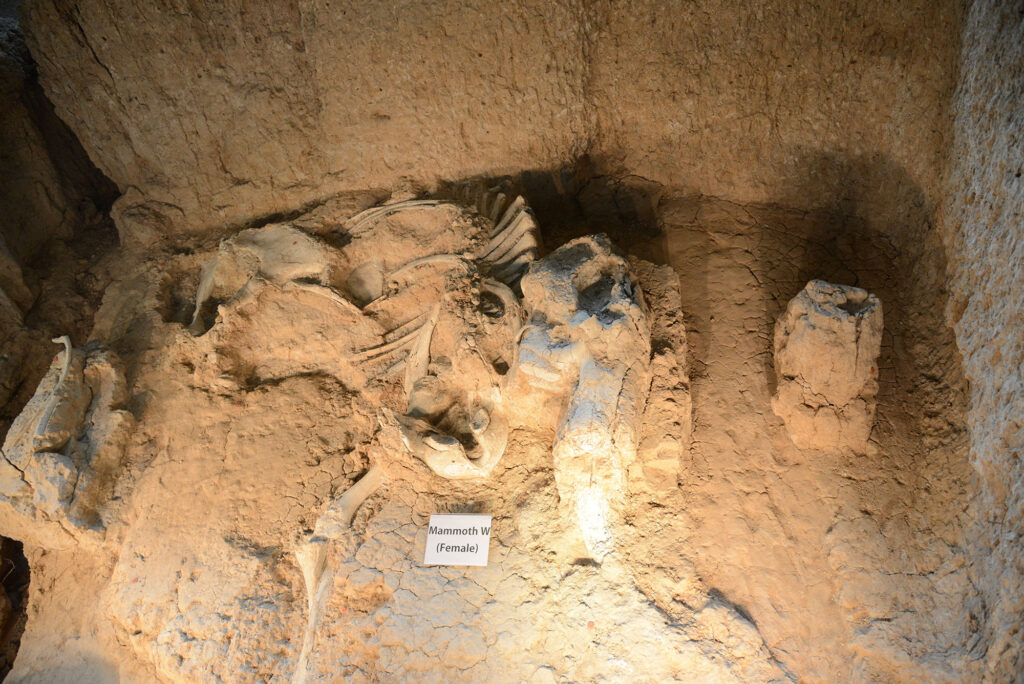
For a guaranteed fossil-finding experience, U-Dig Fossils in Delta, Utah, offers a commercial quarry where visitors can split shale layers to reveal Cambrian-period trilobites approximately 500 million years old. This fee-based site provides all necessary tools and instructions, making it ideal for novice collectors. The House Range location was once an ancient sea floor, resulting in exceptional preservation of these early arthropods with their distinctive three-lobed bodies and compound eyes. Collectors typically find multiple specimens during a visit, with about 75% of visitors discovering complete trilobites. The site operates seasonally from April through October, weather permitting, and requires no reservations for individuals or small groups. What makes this location particularly special is that collectors can keep everything they find, providing a tangible connection to some of Earth’s earliest complex life forms.
Fossil Safari at Warfield Fossil Quarries, Wyoming

The ancient Fossil Lake that once covered Southwest Wyoming has left behind the Green River Formation, one of the richest fossil deposits in North America. At Fossil Safari in Kemmerer, visitors can split layers of limestone to reveal perfectly preserved fish fossils dating back 52 million years to the Eocene epoch. The commercial quarry provides tools, instruction, and even assistance with identifying finds. The fossils here are renowned for their exceptional preservation, often showing detailed scales, fins, and even stomach contents. Multiple species are commonly found, including Knightia (Wyoming’s state fossil), Diplomystus, Mioplosus, and occasionally stingrays, plants, and insects. The high elevation (7,000 feet) and exposed conditions mean weather can change rapidly, so visitors should prepare with sun protection, water, and layers regardless of the season.
Mazon Creek Fossil Beds, Illinois
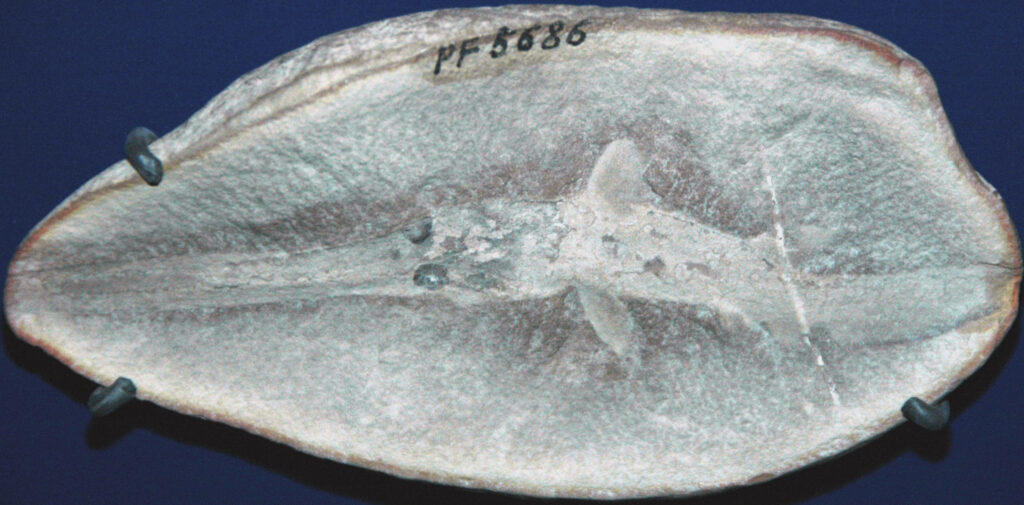
The Mazon Creek Fossil Beds represent one of the most important Paleozoic fossil deposits in the world, preserving soft-bodied organisms rarely found elsewhere in the fossil record. Dating to approximately 309 million years ago (Pennsylvanian period), these fossils are contained within distinctive iron concretions—rounded nodules that, when split open, may reveal perfectly preserved plants, insects, fish, jellyfish, and even the famous Tullimonstrum (Tully Monster), Illinois’ state fossil. While the original site is now largely mined out, collectors can still search legally at Mazonia-Braidwood State Fish and Wildlife Area, where fossil collection is permitted between February and March, and September through October only. Collectors should look for rounded, rust-colored concretions along creek beds and spoil piles from former coal mining operations. The concretions often require careful preparation at home, adding an extra element of anticipation to the fossil hunting experience.
Purse State Park, Maryland
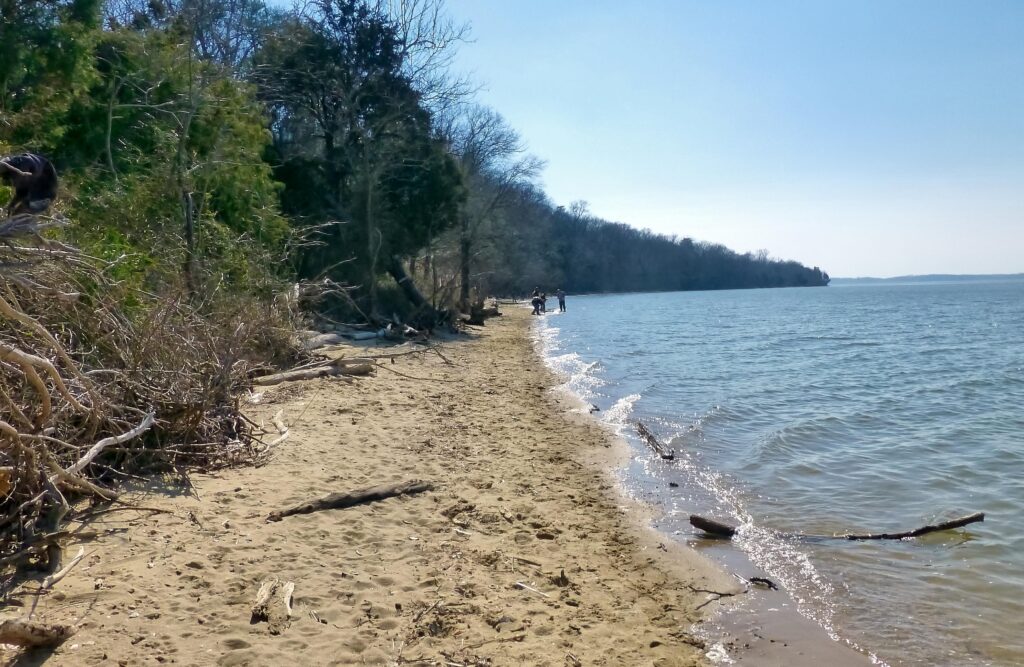
Along the Potomac River in Maryland lies Purse State Park (now part of Nanjemoy Wildlife Management Area), a less crowded alternative to Calvert Cliffs that offers excellent opportunities for finding Paleocene fossils approximately 60 million years old. The site preserves fossils from the time shortly after the dinosaur extinction, providing insights into the recovery and diversification of life following this major event. Visitors commonly find shark teeth, ray plates, crocodile teeth, and beautifully preserved mollusks along the shoreline. The fossils are exposed through natural erosion and are most visible during low tide, making tide table consultation essential before visiting. Access requires a moderate hike through wooded terrain, but the effort is rewarded with both fossil-hunting opportunities and scenic river views. Unlike many sites, Purse allows collectors to keep reasonable quantities of fossils for personal use without permits or fees.
Peace River, Florida
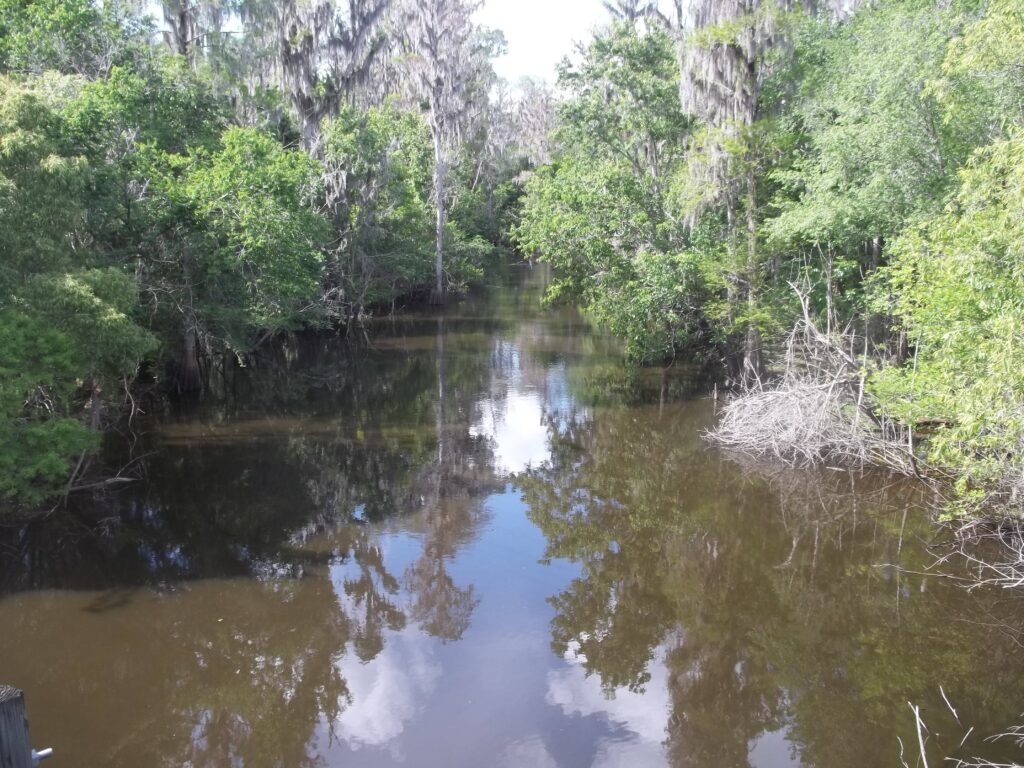
Florida’s Peace River offers a unique fossil hunting experience that combines water recreation with paleontological discovery. The river cuts through deposits from the Pleistocene and Miocene epochs, exposing fossils ranging from 12,000 to 5 million years old. During the dry season (typically October through May), low water levels expose gravel bars and provide access to the riverbed where fossils accumulate. Collectors wade or canoe between access points, using shovels and screens to sift river sediment for treasures. The site is particularly famous for yielding Ice Age mammal remains, including mammoth and mastodon teeth, giant ground sloth bones, and the teeth of the enormous megalodon shark. Florida requires collectors to obtain an inexpensive Fossil Permit from the Florida Museum of Natural History before collecting vertebrate fossils (though no permit is needed for shells or shark teeth). Local outfitters offer guided fossil hunting tours that provide equipment, transportation, and expertise.
Westmoreland State Park, Virginia

Nestled along the Potomac River, Westmoreland State Park offers access to the Horsehead Cliffs, which expose layers from the Miocene epoch, approximately 15 million years ago. The park’s Fossil Beach (officially called Stratford Beach) is accessible via a scenic 1.5-mile hike along the Big Meadow Trail, where visitors can search for prehistoric treasures along the shoreline. The most common finds include various shark teeth, particularly from sand tiger sharks, but patient searchers might discover teeth from the massive megalodon shark that once prowled these ancient seas. Beyond teeth, collectors frequently find ray dental plates, porpoise vertebrae, and various mollusk fossils. The beach is relatively small but constantly refreshed by erosion and tidal action. The park permits fossil collection for personal use without tools or digging into the cliffs. Combining fossil hunting with the park’s other amenities, es as camping, hiking, and swimming, makes for a well-rounded outdoor experience for the whole family.
Caesar Creek State Park, Ohio

In southwestern Ohio, Caesar Creek State Park offers collectors a glimpse into life from the Ordovician Period, approximately 445 million years ago. The emergency spillway area of Caesar Creek Lake has exposed layers rich in marine invertebrate fossils from when the region was covered by a shallow tropical sea. Visitors can find brachiopods, bryozoans, trilobites, horn corals, cephalopods, and stunning examples of colonial organisms like the distinctive Isotelus trilobite. The park requires fossil collectors to obtain a free permit from the visitor center before collecting, and only allows collection of loose material without tools in the designated emergency spillway area. The collection is limited to what can fit in a small container, ensuring the sustainability of the resource. Educational programs, including guided fossil hunts, are regularly offered by park naturalists, making this an excellent location for beginners and families to learn proper fossil identification and collection techniques.
Lyme Regis and Charmouth, England
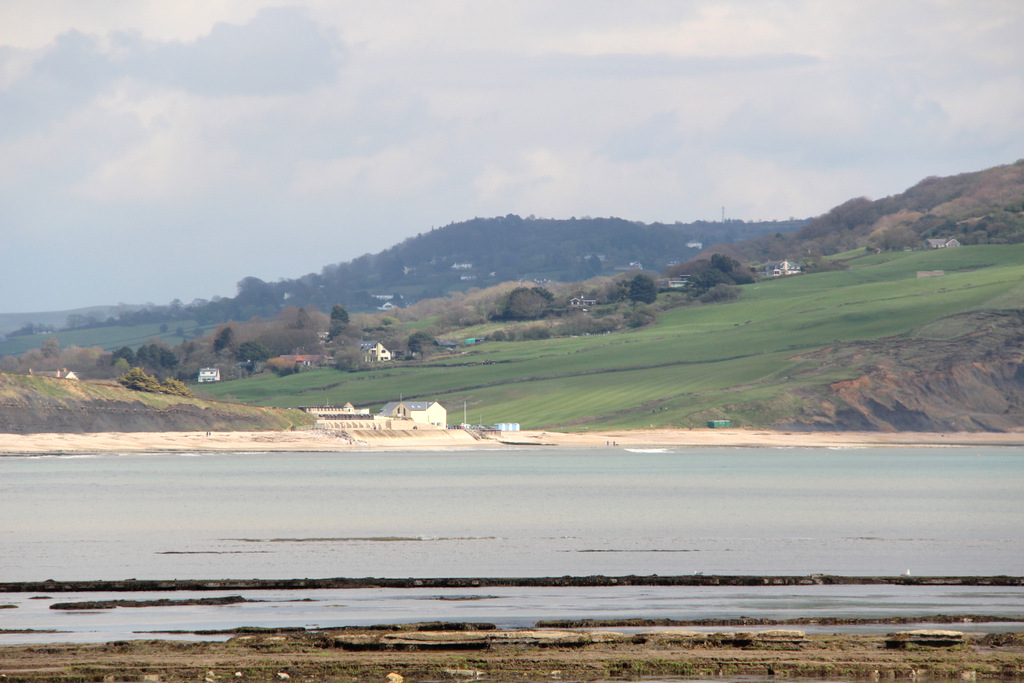
The Jurassic Coast of southern England represents perhaps the most famous fossil hunting location in the world, stretching 95 miles from East Devon to Dorset. This UNESCO World Heritage Site offers access to 185 million years of Earth’s history through its eroding cliffs. The beaches around Lyme Regis and Charmouth are particularly productive, yielding ammonites, belemnites, and occasionally spectacular marine reptile specimens like ichthyosaurs and plesiosaurs from the Early Jurassic period. The constant coastal erosion regularly exposes new specimens, particularly after winter storms and landslides. Mary Anning, one of history’s most important fossil collectors, made her groundbreaking discoveries here in the early 19th century. Today’s visitors can follow in her footsteps while adhering to the Fossil Collecting Code of Conduct, which promotes responsible collection without hammering the cliffs. Local museums and fossil shops provide identification services, and guided fossil walks offer educational opportunities to learn about the area’s rich paleontological heritage.
Dinosaur Provincial Park, Alberta, Canada

While many dinosaur fossil sites prohibit collection, Dinosaur Provincial Park in the badlands of Alberta offers a compromise through guided programs that allow visitors to experience authentic dinosaur fossil discovery. This UNESCO World Heritage Site contains one of the richest concentrations of Late Cretaceous dinosaur fossils in the world, dating from approximately 75 million years ago. The park’s Fossil Safari program takes visitors to a bone bed where they can help uncover real dinosaur bones and learn field techniques from professional paleontologists. Though visitors cannot keep the fossils they find, the experience provides authentic participation in scientific discovery. The stark badland landscape of eroded sandstone offers a glimpse into the environment where dinosaurs once thrived. For those wanting to explore independently, self-guided interpretive trails showcase exposed fossils that remain in situ, protected but visible for education and appreciation.
Essential Tools and Techniques for Fossil Hunting

Successful fossil hunting requires proper preparation and equipment tailored to your destination. Basic tools include a geological hammer (rock hammer) for breaking rocks, chisels for more precise work, protective eyewear, sturdy gloves, and specimen containers. For beach or river sites, screens or sieves help separate fossils from sand or gravel. A small brush or toothbrush aids in cleaning specimens in the field without causing damage. Documentation supplies like a field notebook, camera, and small ruler for scale are invaluable for recording important context about your finds. Techniques vary by location—beaches often require careful scanning of the surface, particularly after storms or at low tide, while quarries involve splitting rocks along bedding planes to reveal fossils within. Developing a search image for the distinctive shapes, textures, and colors of fossils takes practice but dramatically improves success rates. Above all, patience remains the fossil hunter’s most important attribute, as careful, methodical searching yields the best results.
Preserving and Identifying Your Fossil Finds

After the excitement of discovery comes the important work of preservation and identification. Fragile fossils often require stabilization—a diluted white glue solution can be applied to strengthen crumbling specimens, while larger pieces may need wrapping in tissue and padding for transportation. Clean fossils gently using soft brushes and water, avoiding harsh chemicals that might damage the specimen. For identification, regional fossil guidebooks provide excellent starting points, while natural history museums and university geology departments sometimes offer identification services. Online fossil forums connect collectors with experts who can help identify unusual specimens. When documenting your collection, record as much contextual information as possible: precise location, the layer or formation it came from, date of collection, and associated fossils. This information dramatically increases both the scientific value and personal meaning of your discoveries. For particularly significant finds, consider contacting local museums or universities, as your discovery might contribute valuable scientific data.
Discovering Ancient Life Through Legal Fossil Hunting

Fossil hunting offers a unique blend of outdoor adventure, scientific discovery, and connection to Earth’s ancient past. The accessible sites described here provide opportunities for collectors of all ages and experience levels to find genuine fossils while respecting preservation laws and scientific heritage. Beyond the thrill of discovery, fossil hunting fosters a deeper understanding of evolution, extinction, and environmental change—lessons particularly relevant in today’s world. Whether you’re splitting shale for trilobites in Utah or sifting through Florida river sediment for Ice Age mammals, each fossil you uncover represents a direct link to organisms that lived millions of years before humans walked the Earth. This tangible connection to deep time offers a perspective that few other activities can provide. As you plan your fossil hunting adventure, remember that today’s responsible collectors become tomorrow’s stewards of our planet’s remarkable paleontological heritage.




